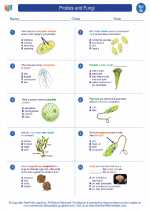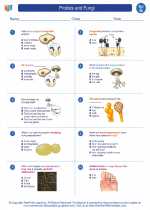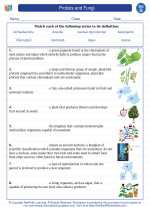Canyons
A canyon is a deep, narrow valley with steep sides, often carved by a river or erosion over time. Canyons can be found all over the world and are the result of various geological processes. They are often characterized by their stunning natural beauty and unique rock formations, making them popular attractions for hikers, tourists, and geologists.
Formation of Canyons
There are several ways in which canyons can be formed:
- River Erosion: One of the most common ways canyons are formed is through the gradual erosion of rock by a river. Over time, the force of the flowing water can carve out deep valleys, creating the distinct canyon shape.
- Glacial Activity: During the last Ice Age, glaciers carved out many of the world's canyons as they advanced and retreated, leaving behind steep-sided valleys.
- Volcanic Activity: Some canyons are formed as a result of volcanic activity, with lava flows and volcanic eruptions shaping the surrounding landscape.
- Erosion by Wind and Rain: Wind and rain can also contribute to the formation of canyons by wearing away at rock over time, particularly in arid or desert environments.
Famous Canyons
There are numerous famous canyons around the world, each with its own unique features and characteristics. Some of the most well-known canyons include:
- Grand Canyon: Located in Arizona, USA, the Grand Canyon is one of the most famous and visited canyons in the world, known for its immense size and colorful rock layers.
- Colca Canyon: Situated in Peru, Colca Canyon is one of the deepest canyons in the world and is home to the Andean condor.
- Antelope Canyon: Found in Arizona, USA, Antelope Canyon is renowned for its narrow passageways and breathtaking light beams that filter through the rock formations.
- Yarlung Tsangpo Grand Canyon: Often referred to as the "Grand Canyon of the East," this canyon in Tibet is one of the deepest and most dramatic in the world.
Study Guide
When studying canyons, it's important to understand the geological processes that contribute to their formation, as well as the unique features of specific canyons around the world. Here are some key points to focus on:
- Describe the different ways in which canyons can be formed, including river erosion, glacial activity, volcanic processes, and erosion by wind and rain.
- Identify and compare the features of at least three famous canyons, discussing their size, location, and distinctive characteristics.
- Explain the significance of canyons in terms of their geological and ecological importance, as well as their cultural and recreational value.
- Discuss the challenges and conservation efforts associated with preserving canyons and their surrounding environments.
By understanding the formation, features, and significance of canyons, you can gain a deeper appreciation for these remarkable geological formations and the natural processes that shape our planet.
[Canyons] Related Worksheets and Study Guides:
.◂Science Worksheets and Study Guides Seventh Grade. Protists and Fungi

 Worksheet/Answer key
Worksheet/Answer key
 Worksheet/Answer key
Worksheet/Answer key
 Worksheet/Answer key
Worksheet/Answer key
 Worksheet/Answer key
Worksheet/Answer key
 Vocabulary/Answer key
Vocabulary/Answer key
 Vocabulary/Answer key
Vocabulary/Answer key
 Vocabulary/Answer key
Vocabulary/Answer key
 Vocabulary/Answer key
Vocabulary/Answer key
 Vocabulary/Answer key
Vocabulary/Answer key
 Vocabulary/Answer key
Vocabulary/Answer key
